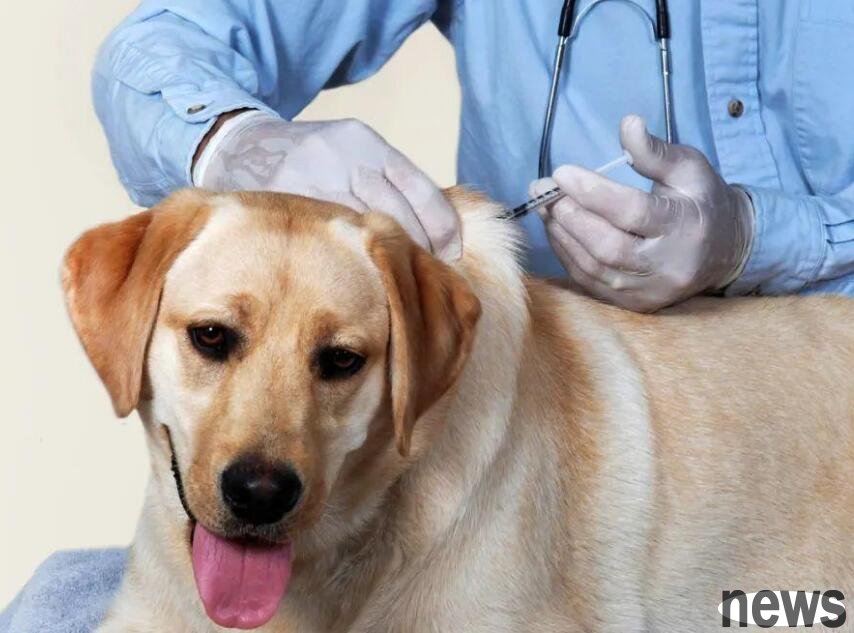For young dogs without medical history, physical examinations do not need to be particularly frequent. For older and middle-aged dogs, it is best to see a doctor once a quarter. Generally speaking, doctors will solve the disease found by dog owners for dogs who come to see the disease and check whether there are other hidden dangers.
When the dog is two or three years old, the dog can undergo regular physical examinations, which can also collect physical data when the dog is young and healthy. Without health data, it is difficult to find out which physical metrics have changed when the dog is old and has complex problems and many abnormal symptoms appear, which makes the current situation difficult.
You can make a pet dog manual, just like a pregnant woman’s mother and baby manual, paste the physical data provided by the doctor and save it. Once the situation occurs, it is easy to check. If you move home and change your doctor, you can provide data to your new doctor.
Extended information:
Disease prevention and treatment of pet dogs
Disease prevention and treatment of pet dogs must be vaccinated to avoid injuring people and causing illness. In addition, deworming should be regularly performed to prevent parasitic infections. For these professional jobs, you must go to a regular pet hospital to find a professional pet doctor for advice and handling. Vaccinations for pet dogs generally include rabies vaccine, canine distemper vaccine, hepatitis vaccine, etc.
Regardless of whether the pet dog is vaccinated or not, once a person is bitten by a pet dog, you must go to a regular hospital to find a doctor to deal with it as soon as possible.
Canital distemper and parvovirus disease are common epidemics in pet dogs, which have a significant impact on the physical health of dogs. In severe cases, it directly threatens the life safety of pet dogs. At present, although many pet dog owners treat it every year, the incidence of the above two epidemics remains high.
Combined with the pathogenesis characteristics of the above epidemic and clinical symptoms, the key points of diagnosis are proposed, and the prevention and treatment methods are analyzed and summarized. A detailed report is now made.

Canitary distemper
Usually, canine distemper epidemics usually occur in pet dogs and puppies. The pathogenic virus of this disease is mainly canine distemper virus, which has a serious impact on the health of puppies. Canine distemper may cause serious indigestion in pet dogs, and manifestations such as rhinitis and respiratory obstruction. Some sick dogs will have encephalitis, threatening the lives of sick dogs.
Canis distemper virus is generally distributed in the excrement of sick dogs, and a large number of viruses are also present in its secretions. There are usually two ways for healthy pet dogs to get infected with canine distemper. One is to directly contact food containing viruses, and the other is to contact dogs who have already had canine distemper. Canine distemper can occur all year round, with spring and winter as the peak seasons, especially in stages where weather changes are relatively significant. Generally speaking, pet dogs aged 1 to 2 are more likely to develop canine distemper virus infection.
Clinical symptoms. Canine distemper can damage the respiratory function of a sick dog, causing it to be narrowed. Some sick dogs may experience conjunctival flushing, and some secretions in the eyes may increase significantly.
At the same time, the sick dog will experience tremor, chills, transparent nasal snot, etc. The secretions in the nose and eyes can gradually turn into purulent secretions, resulting in local skin ulcers. The gastrointestinal function of the sick dog is severely affected, not only will it show vomiting, diarrhea, etc., but it will also experience loss of appetite, resulting in weight loss.
For dogs with severe canine distemper virus infection, in addition to the above symptoms, some dogs will also experience muscle pain, spasms, etc., and will be accompanied by severe neurological symptoms, resulting in coma. Canine distemper is divided into three stages, and the clinical symptoms of each stage are slightly different. The content in Table 1 is the main clinical symptoms of canine distemper.
pollution source reduces the probability of large-scale outbreaks of viruses. For sick dogs, they should be actively treated according to the stage of their onset. In the early stage of the onset, monoclonal antibody or serum can be used to treat the diseased dog's viral infection, and immunoglobulin intake can effectively improve the immune function of the diseased dog.
While actively carrying out specific treatments, corresponding antiviral treatments must also be carried out. If multiple pathogenic infections are combined, antibiotics will be used for treatment.

paragus virus disease The main epidemic characteristic of parvovirus disease is that it is highly contagious, but the course of the disease is relatively short. The pathogenic bacteria of this epidemic are mainly canine parvovirus. In the early stages of the disease, sick dogs may experience more serious gastrointestinal symptoms and vomiting symptoms are more significant.
Dimilar symptoms usually occur in the later stage of the onset, with blood in the feces, and the stool smell is relatively strong, and the stool color is tomato red. When diagnosing parvovirus disease, laboratory tests are usually not required, and special test strips can be used to clarify the condition.
Clinical symptoms. Paraviral disease is mainly divided into two types: one is enteritis and the other is myocarditis. Among them, enteritis usually has clinical symptoms within 2 weeks of viral infection. The diseased dog's body temperature rises significantly, appetite decreases, and symptoms of vomiting and diarrhea appear. The feces are thin at the beginning of the disease, and symptoms of hemorrhage may appear after the course of the disease progresses, and the feces are brown in color.
At the same time, the sick dog is weak all over, has a significant decrease in weight, and has symptoms of eye depression. If treatment is ignored, it will cause shock and death. For myocarditis type, this type is relatively rare, and there are no significant symptoms or signs before onset.
not only occurs suddenly, but also leads to a rise in body temperature and causes respiratory obstruction, gastrointestinal symptoms, etc. Paraviral disease can lead to a severe decrease in appetite and inability to eat in severe cases. Symptoms such as diarrhea and vomiting can aggravate the imbalance of water and electrolytes, resulting in a significant decrease in the effective circulating blood volume and causing microcirculation dysfunction.
Key points of differential diagnosis. Since parvovirus disease is relatively sudden and has a short course of disease, it poses a significant threat to the life safety of the sick dog, it should be compared with other flows when clinical diagnosis is made. Effectively distinguish the disease and take symptomatic treatment intervention measures in a timely manner to avoid prolonged disease and improve clinical treatment effect.
For example, parvovirus disease and canine distemper can cause severe diarrhea and vomiting symptoms in sick dogs, but can be distinguished by distinguishing excrement. parvovirus disease can cause diseased dogs to excrete fishy feces, and the color is similar to tomato red, and canine distemper will not show the above symptoms. For example, parvovirus disease and canine hepatitis are both dehydrated, vomiting, diarrhea and bloody stools, but parvovirus disease has no jaundice or hepatomegaly, so differential diagnosis can be made based on this.
Prevention and control strategy.
(1) Preventive measures: In order to effectively prevent parvovirus disease, parvovirus enteritis vaccination should be given in time during the pet dog and puppies.
At the same time, when raising pet dogs, we must ensure scientific feeding, timely supplement trace elements, and supplement vegetable ingredients on this basis to ensure a reasonable diet and nutritional combination of dietary fiber. Note that during the feeding process, you cannot feed spoiled food or feed to fully prevent minor epidemics.
(2) Treatment method: In order to fully reduce the imbalance of water and electrolytes, maintain normal blood volume, and reduce the incidence of shock, effective measures should be taken to expand blood volume.
When undergoing fluid rehydration treatment, the actual condition of the diseased dog should be determined based on the diseased dog's condition. Pay close attention to the rehydration treatment process. If you find that the heartbeat of the sick dog has returned to normal and can urinate independently, it means that the effect of rehydration treatment has been achieved and the fluid input can be stopped according to the actual situation. During the treatment process, attention should be paid to the following issues:
First, close observation of the heart and lung function of the sick dog during treatment. If there is difficulty breathing and excessive heart rate, the fluid infusion speed should be adjusted reasonably and the fluid dose should be limited. Second, for sick dogs that require a lot of fluid replenishment, the liquid temperature should be controlled to avoid low-temperature fluid replenishment, thereby effectively reducing the risk of treatment.